Notes from the Field: A Growers Perspective – Ben Kraus Chat #2
Welcome back to our third report of 2025 Notes from the Field! As a reminder, this year’s Notes from the Field will follow Ben Kraus with Gwenyn Hill Farm (Waukesha). The goal of this newsletter is to hear from the grower’s perspective and foster connection between fruit growers. We’ll be focusing our discussions on phenology/fruit development and integrated pest management. As we kick off bloom in Wisconsin, hear from Ben on how he’s tackling early season management decisions.
I met with Ben on Monday, May 5th to check on fruit phenology as we move deeper into bloom. As a reminder, Gwenyn Hill has a 4-acre block of tree fruit and berries that sits along a north-facing slope, and ~150 table grape vines bordered by saskatoons and rhubarb across the road. Weather over the past two weeks has been warming up, with an average high temperature of 62.4℉, average low temperature of 41.6℉, and a total of 1” of precipitation (NEWA – Colgate, WI). Most tree fruits are in bloom, minus apples (full pink), while grapes are between the wooly bud stage (EL3) to budburst (EL4). As for berries, Ribes spp. are between full bloom and petal fall, and strawberries have yet to hit the flowering stage.
Note: Gwenyn Hill is impacted by the “lake effect” from Lake Michigan and is slightly behind in terms of phenology, compared to other southern WI locations.
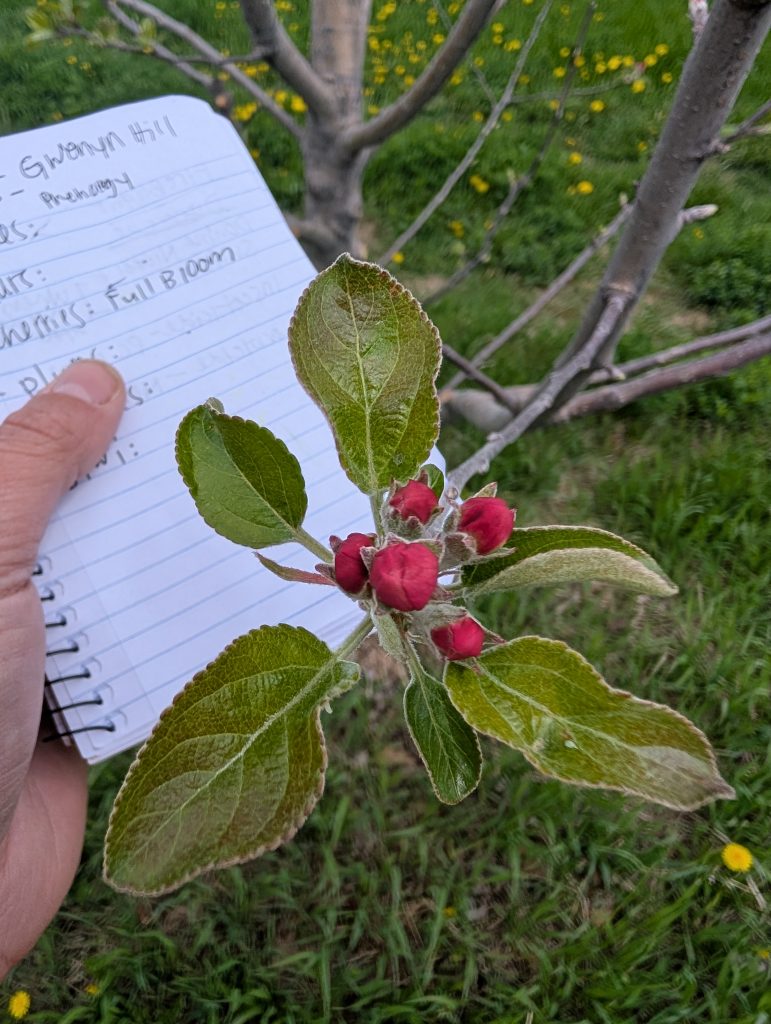
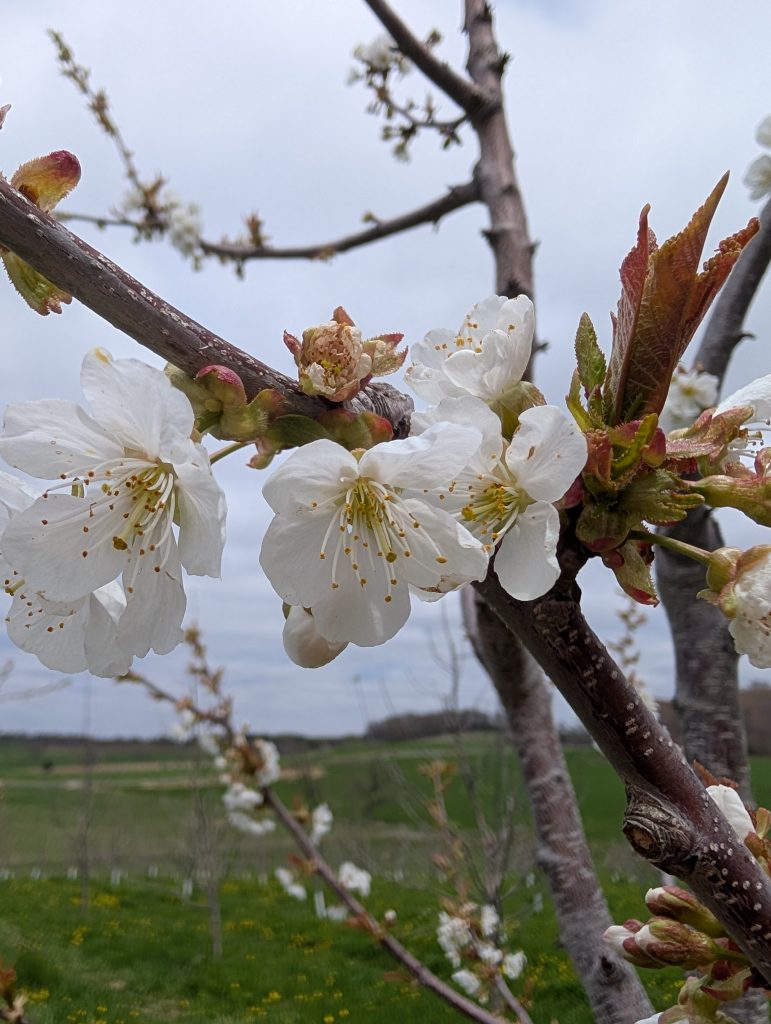
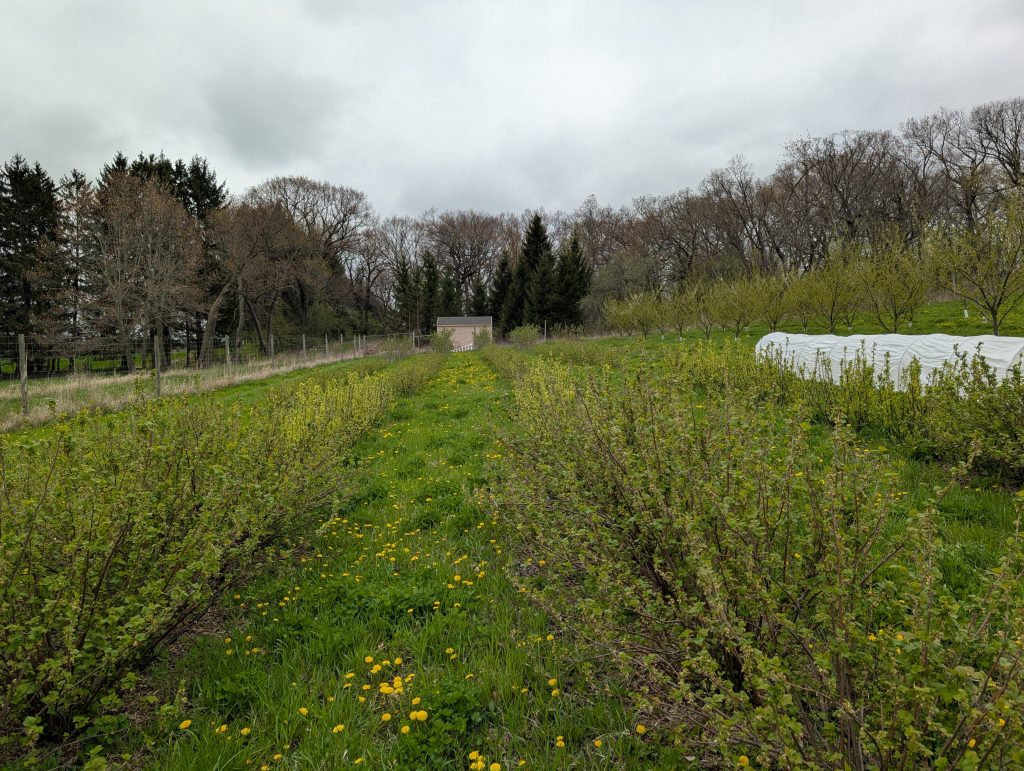
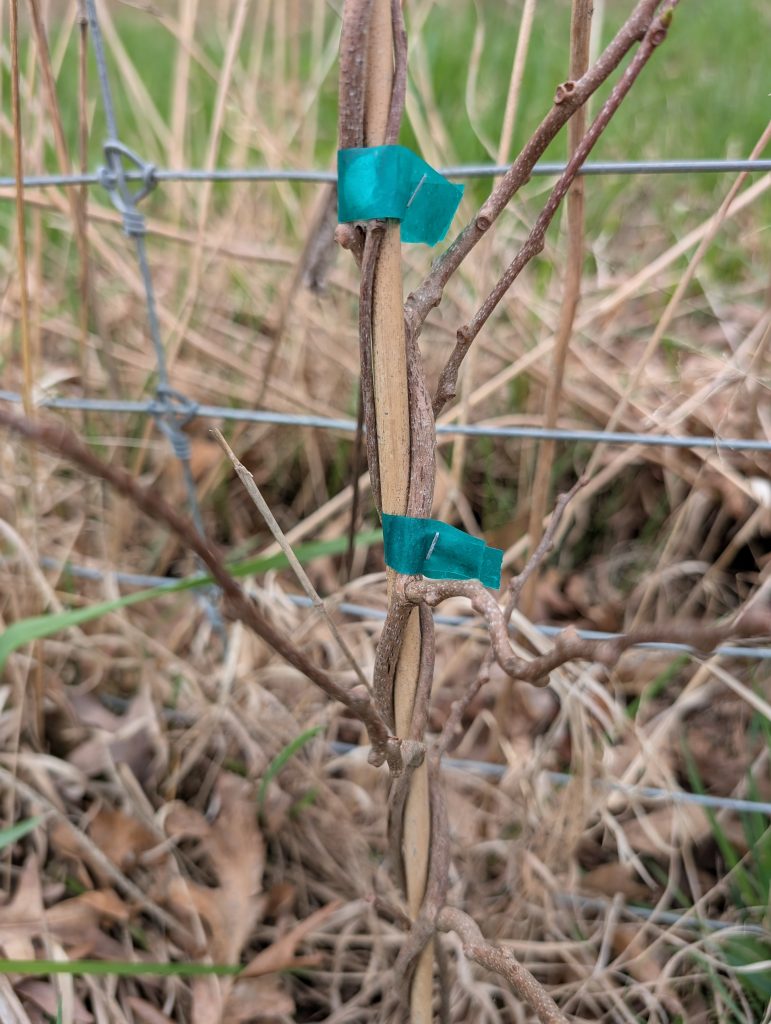
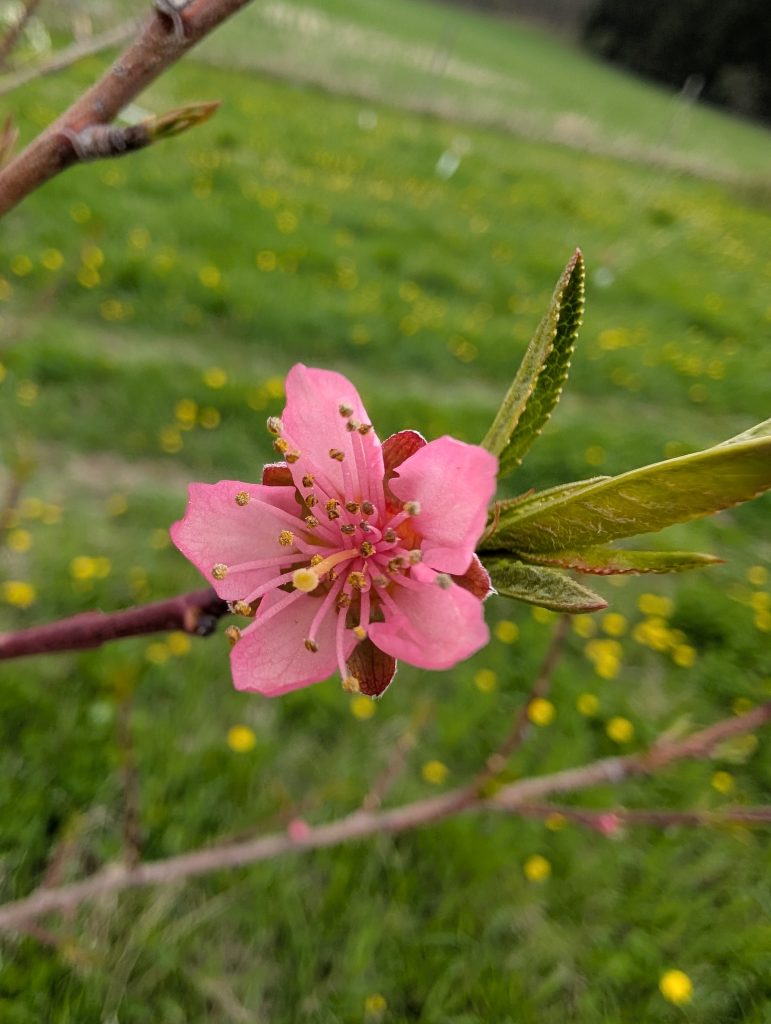
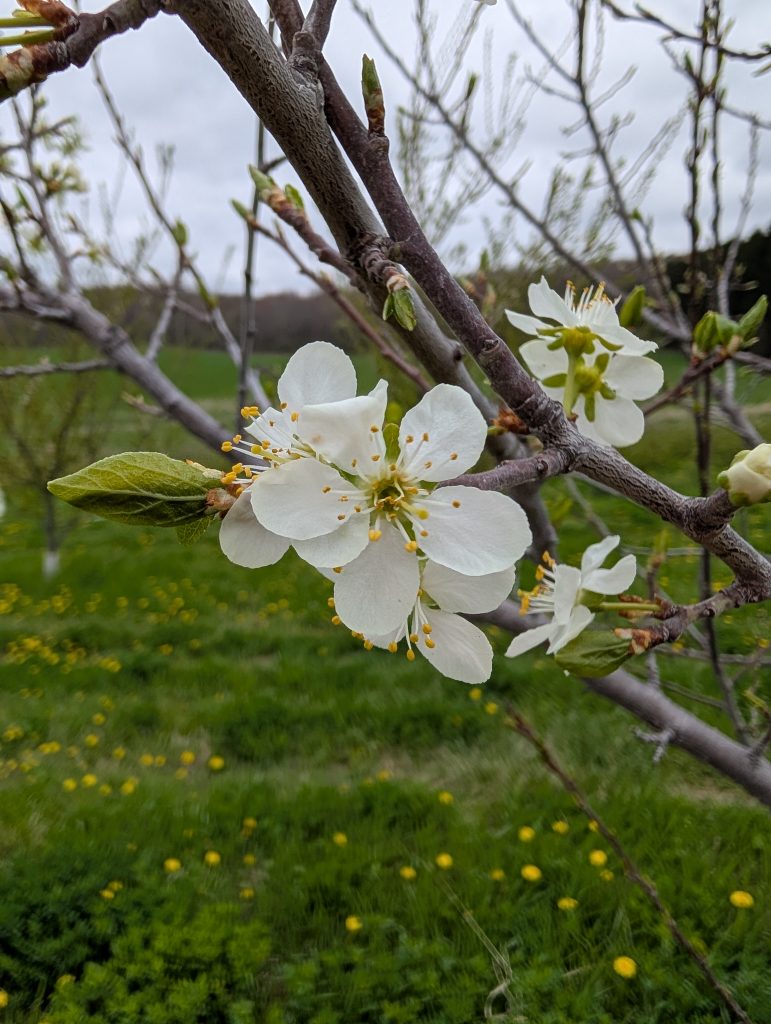
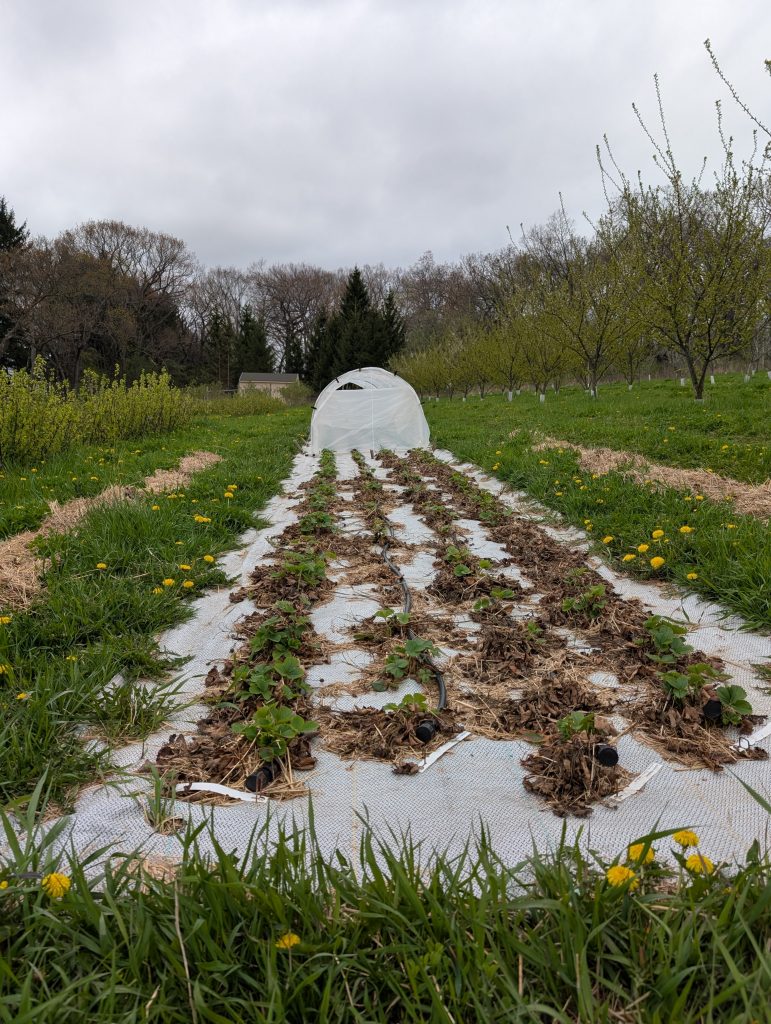
At the top of the 4-acre fruit block, there is an abandoned orchard (~30 standard apple trees) that Ben monitors. We observed early-instar obliquebanded leafroller larvae and Ben plans to hang codling moth pheromone and apple maggot red sphere traps to monitor insect populations through the growing season. Wisconsin has a plethora of abandoned orchards that could be harboring insects and/or diseases and it’s always a good idea to visually monitor nearby abandoned orchards.
With most tree fruit and berries in bloom, pollinators were quite active. Gwenyn Hill has a very healthy native bee population and an on-farm honeybee hive that is maintained by a local beekeeper. Honeybees and native pollinators play an important role in fruit production, as flowers require pollination in order to develop into a healthy fruit.
This week, Ben plans to apply an early-season disease protectant for tree fruit, rotating between Double Nickel (a Bacillus-based biofungicide) and Organic Sulfur. Ben will also be adding AgriPhage (a bacteriophage, or virus, of the fire blight bacterium) to his disease management toolbox, applied as a protectant and/or rescue treatment for fire blight. Agriphage is an OMRI bactericide registered for pears and apples.
In our next Notes from the Field, Ben and I will chat about petal fall management considerations, more specifically plum curculio! Plum curculio is one of the “Big Three” apple insect pests that directly damages fruit via feeding and oviposition (egg laying). It will be important to monitor perimeters for signs of movement into the orchard around petal fall. Wishing the best of luck to all WI fruit growers as we move through the bloom season!
This article series is NOT intended to be prescriptive for other orchards. It is simply an opportunity for our readership to hear from other growers about their experiences growing fruit crops in Wisconsin.
Growing the same crop does not always justify the same practices. Management decisions at your farm should be tailored to your operation and consider location, regional climate, disease and pest history of your vineyard, and your varieties.
The mention of a product is NOT an endorsement. Always follow the instructions on product labels and consult weather stations (ex. NEWA) in your area for current weather forecast and disease and pest prediction models.
This article was posted in Notes from the Field and tagged Ben Kraus, Josie Dillon, Notes from the Field.
